Hi there! Bertie here continuing our Herb Gardening Series. Today, we turn our green thumbs toward sage.
This timeless herb isn't just for cooking—it's a treasure trove of health benefits. We’ll cover everything from its storied past and various types to its cultivation methods and uses in personal care.
Whether you're a seasoned gardener, a kitchen wizard, or just curious about the health perks of herbs, our deep dive into sage promises to be both informative and captivating. Join us as we explore the wonders of this remarkable plant.
Key Takeaways
Sage, also known as Salvia officinalis, is not just a kitchen favorite but a plant steeped in history with a myriad of uses that extend into the medicinal realm, enhancing cognitive health, and even personal care.
Growing this hardy herb demands a sunny spot, well-draining soil, and plenty of room to flourish. The care for sage is fairly straightforward—water sparingly, keep an eye out for pests, and harvest carefully to ensure your sage plant continues to thrive.
Beyond its culinary prowess, incorporating sage into your daily routine could boost your brain power, support heart health, and aid digestion, all while adding a touch of natural beauty to your garden and living spaces.
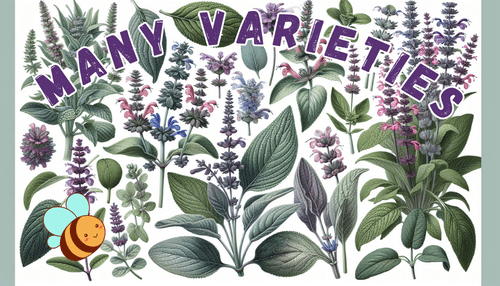
Table of Contents
- Review of Herb Gardening Articles Published
- Salvia Officinalis: Sage's Rich History and Varieties
- Cultivating Sage: From Planting to Harvest
- The Culinary Delights of Sage
- Sage's Medicinal Properties and Health Benefits
- Sage as a Natural Remedy
- Sage for Personal Care and Home Use
- Embracing Sage in Your Daily Life
- Resources
- Summary
- Frequently Asked Questions
Review of Herb Gardening Articles Published
In our Herb Gardening Series, we've looked at a variety of herbs and how to grow them. We've tackled everything from setting up an herb garden to spice up your kitchen adventures, to exploring the fragrant world of lavender, and learning about the healthful benefits of basil.
- Herb Garden Adventures: Plant & Grow with Me
- How to Plan an Herb Garden to Elevate Your Culinary Space
- Lavender Love: From Seed to Scent, How to Plant and Grow Lavender!
- Discover Basil's Wonders for Your Health and Wellness
- Herb Gardening Bliss: A Lively Update on Bertie’s Growing Herb Garden
This exploration has been educational, leading us to focus next on sage, the garden variety that's a favorite in kitchen gardens worldwide.
Known for its robust resistance to leaf diseases and its crisp, earthy taste, sage—especially when ground—adds a rich flavor to recipes and is a hearty addition to any vegetable garden.
Salvia Officinalis: Sage's Rich History and Varieties

Meet Salvia officinalis, commonly known as sage, a plant with a story as deep as its roots. Sage isn't just a staple in the kitchen; it's been revered through the ages for its medicinal properties and spiritual significance.
This versatile herb has adorned gardens and kitchens for centuries, weaving a rich tapestry through culinary and herbal traditions around the world. While there are many, many types of sage here are a few of the more popular ones:
Tricolor sage
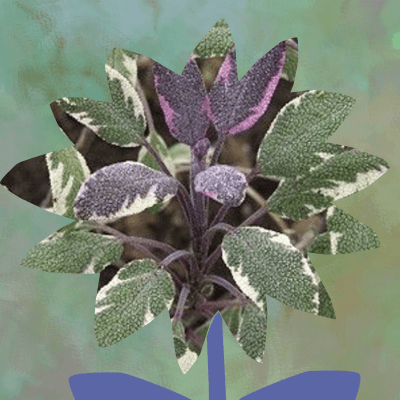
Purple sage
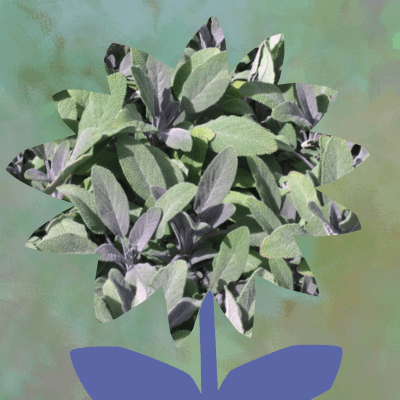
Golden sage
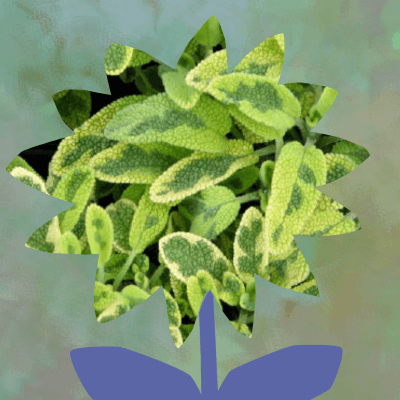
Common or garden sage
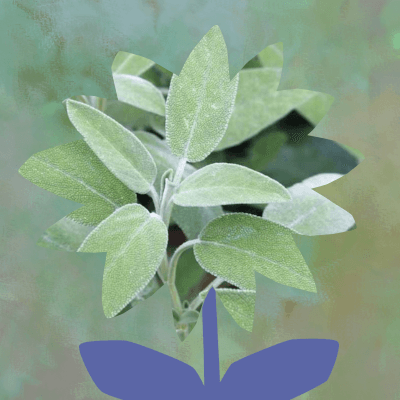
From the silvery-green leaves of common sage to the decorative splashes of purple and red found in other varieties, sage comes in many forms, each with its own unique flavor and use.
Whether it's enhancing a roast, soothing a sore throat, or clearing the air with its purifying smoke, sage continues to be a beloved herb in homes and gardens alike.
Read on as we explore the many faces of sage, a true testament to nature's ingenuity.
Sage Through the Ages: A Plant of Tradition and Healing
From the ancient Greeks and Romans to Native American and Chinese cultures, sage has been revered as a sacred ceremonial herb.
Its use in smudging rituals, where dried sage is burned to cleanse a space or person of negative energy, has been a common practice in Native American traditions.
Additionally, sage has been used as a herbal remedy, with the sage leaf signifying its historical importance and association with concepts such as immortality, domestic virtue, and wisdom.
Cultivating Sage: From Planting to Harvest
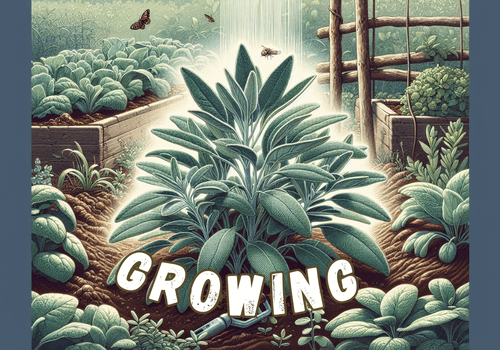
Cultivating sage is a truly rewarding gardening venture, as this herb not only brings a multitude of benefits but also enhances the beauty of your garden.
To ensure sage plants thrive, they require full sunlight, well-drained soil, and good air circulation.
Let’s dig into the specifics of planting, nurturing, and harvesting sage. This splendid herb is known for its upright flower spikes, which add a striking visual element to any garden space.
Now let's explore how to make the most of this wonderful herb in your own backyard.
Planting Your Sage: Getting Off to a Great Start
Beginning our sage-growing journey starts with the planting process. Here are some essential tips to help your sage plants flourish:
- Sunlight and Soil: Sage loves basking in full sunlight and thrives in well-draining soil.
- Planting Options: While starting from a small plant is often easier and yields quicker results, growing sage from seeds is also an option. I've experimented with both and am getting ready to transplant the seedlings. (I started with the Broadleaf sage seeds as they were in the bundle I purchased.)
- Choosing Transplants: When picking sage plants at a nursery, look for sturdy transplants with multiple stems, which are indicators of healthy growth. These are the two plants I bought. They are the purple sage.
- Pot Size and Roots: Opt for plants in at least three-inch pots, and check that the roots are healthy and not too crowded.
- Spacing and Timing: After the last frost, transplant your sage seedlings into the garden, spacing them about one foot apart to allow ample room for growth.
With these tips I've learned so far, we are well on our way to enjoying home-grown sage, adding both flavor and beauty to our gardens.
Caring for Sage Plants
Caring for sage plants involves regular maintenance, including watering, pest management, and mulching.
Sage plants should be watered sparingly as they can withstand dry conditions; excessively moist soil may lead to the plant’s demise.
To manage pests that may affect sage, consider organic options such as:
-- Using insecticidal soaps
-- Applying diatomaceous earth. (Huh? So, this is new to me. I am ordering some to see how well it really works! It had good reviews.)
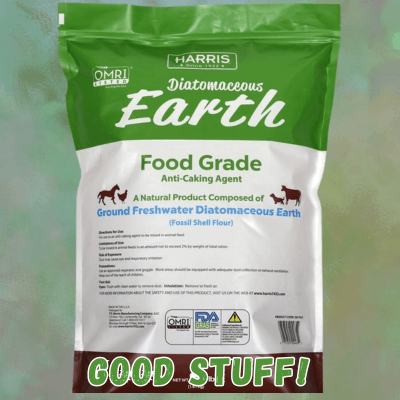
-- Introducing natural predators (Check with your state extension service for these in your area.)

Using an organic fungicide spray (I also bought this as the powdery mildew presented new leaves each morning and I didn't want my little sage plants to be naked!)

Handpicking (which I did for my sage plants that came down with powdery mildew.)
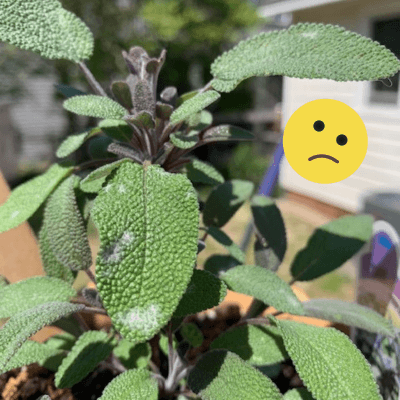
Harvesting and Storing Sage
Once our sage plants are established, it’ll time for harvesting. In this first year, harvest lightly to allow the plant to establish itself fully. Sage leaves can be continuously harvested throughout the growing season.
After harvesting, sage leaves can be preserved by drying on a screen in a well-ventilated area or by hanging in bunches upside down, then stored in airtight containers once fully dried.
I'm also experimenting with freezing some in small ice cube trays in olive oil to see how that works. When cooking something that needs both sage and olive oil, voila! Just take out a little cube and add it directly to the pot or pan!
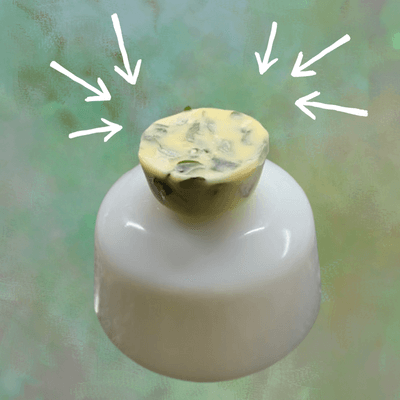
The Culinary Delights of Sage

I've learned that sage is more than just an herb; it’s a culinary powerhouse that can elevate the simplest meals to gourmet levels with its distinctive flavor. Whether it's meat, sides, or even beverages, sage brings a unique touch to every dish.
Let’s explore the savory world of culinary sage.
One delightful way to enjoy sage's healing benefits and delicious taste is by making sage butter. This culinary treat is simple to prepare: just mix finely chopped sage leaves into softened butter.
Sage butter is incredibly versatile, perfect for adding a burst of flavor to sweet potatoes, chicken, vegetables, or even a slice of toast. (I'm for sure going to try this!)
Cooking with Fresh Sage Leaves
Fresh sage offers a robust flavor profile that complements a range of dishes. Whether you’re preparing poultry, pork, or fish, a few leaves of fresh sage can elevate the taste of your dishes. (If you are also seasoning with olive oil, here is where the tiny frozen cubes will come in handy!)
Dried Sage and Its Uses
When fresh sage isn’t on hand, dried sage steps up to fill the void. This versatile form of sage can enhance a variety of recipes, proving itself as a pantry essential.
For example, dried Greek sage, also known as Salvia fruticosa, is particularly popular for its robust flavor. It’s often used to deepen the taste of dishes and is a favorite for brewing into aromatic teas.
Whether you’re cooking or steeping, dried sage ensures you can enjoy its delightful flavor year-round.
Drying sage also allows for long-term storage, making it a convenient choice in any kitchen. (I will definitely try both drying as well as freezing my harvested sage.)
Sage in Beverages? That's New to Me!
Did you know that sage isn’t just for cooking? It turns out, you can also use this versatile herb in beverages. Sage leaves can be steeped in hot water to brew a soothing, aromatic herbal tea.
And here’s a fun twist: fresh sage can add a creative flair to cocktails. Its pungent taste and unique aroma pair wonderfully with sweet or acidic flavors, bringing a surprising balance to your drink.
Sage's Medicinal Properties and Health Benefits

Beyond its role in the kitchen, I've learned that sage is also celebrated for its impressive medicinal qualities.
This remarkable herb is packed with bioactive components that give it anti-cancer, anti-inflammatory, and antioxidant properties. Wow!
It has been acknowledged and utilized in various traditional medicines. It's particularly noted for enhancing memory, managing diabetes, and reducing cholesterol levels.
Research indicates that sage can improve cognitive function and memory, possibly due to its antioxidant properties. It has also been used in traditional remedies to help with cognitive disorders such as Alzheimer's disease. (What is Sage Used For by Dr. Josh Axe, DC, DNM, CN)
For managing diabetes, studies have shown that sage may help lower blood glucose levels. One particular study highlighted the effectiveness of Salvia officinalis leaf extract in improving the lipid profile and managing hyperglycemia in diabetic patients. (Sage: Health Benefits, Precautions and How to Consume it by Shize Khan, M.Sc.)
Additionally, sage has shown potential in lowering cholesterol levels. It acts by affecting lipid metabolism, which can be particularly beneficial for people with type 2 diabetes who also deal with high cholesterol.
For more detailed insights and studies, you might want to explore additional academic research or health publications.
It's truly a powerhouse of wellness, demonstrating that it offers much more than just flavor to our dishes.
Sage's Role in Heart Health
Sage extract has been found to have a beneficial impact on heart health by improving cholesterol levels. Specifically, it can lower LDL (often referred to as 'bad' cholesterol) and triglycerides while increasing HDL ('good' cholesterol).
These effects help in reducing the build-up of fats in the arteries, thereby supporting cardiovascular health. Additionally, sage can prevent the oxidation of LDL-cholesterol, which is crucial in managing heart health and preventing cardiovascular diseases. (The Health Benefits of Sage).
For more detailed studies and information on how sage can benefit heart health, you might look into the research findings provided in health and medical journals such as NIH, National Library of Medicine.
Sage as a Natural Remedy
Sage is a natural remedy that can alleviate several health issues. I have learned that from its antibacterial qualities to its potential role in cancer support and benefits for women’s health, sage has proven its worth as a natural remedy. One popular way to consume sage is by drinking sage tea.
Sage's Antibacterial Qualities
Sage is known for its antibacterial qualities. Sage essential oil has demonstrated antibacterial activity against various bacteria, making it a natural alternative for bacterial infections.
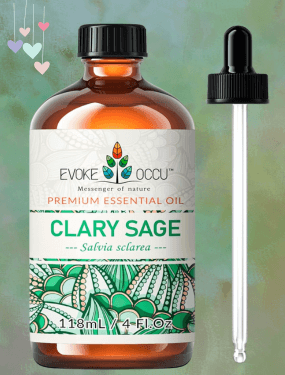
It is also used in oral care products for its antibacterial properties, contributing to better oral health.
Sage for Personal Care and Home Use
Sage is not only beneficial for health but also finds its way into personal care and home products. From oral hygiene to aromatherapy and home fragrance, sage enhances daily routines and creates a fresh and tranquil ambiance at home.
Sage in Oral Hygiene
Sage in oral hygiene offers a host of benefits. Some of these benefits include:
- Growth inhibitory effects on dental caries-causing bacteria
- Alleviation of oral inflammation associated with conditions like gingivitis and periodontal disease
- Astringent properties that help to tighten oral tissues and minimize bleeding
These properties make sage a natural solution for oral health issues.
Sage in Aromatherapy and Home Fragrance
Sage is a popular choice in aromatherapy and home fragrance. Its essential oils contain a high content of camphor, contributing to its widely recognized aroma.
Whether it’s Clary sage or other varieties, sage can create a tranquil and fresh ambiance in your home.
Embracing Sage in Your Daily Life
Integrating sage into your daily life can bring a touch of nature’s magic into your routines. Whether you're using it in your garden or as part of your home wellness regimen, sage offers a blend of aesthetic appeal and practical benefits.
Gardening with Sage: Planting sage can beautify your garden while making it more functional. This herb not only thrives with minimal care but also attracts pollinators like bees, which are vital for a healthy garden.
Culinary Uses: Sage is a staple in the kitchen. It can be used fresh or dried to enhance the flavor of many dishes, from meats to soups and even breads.
Sage Products: Incorporating organic sage products, such as essential oils or skin care items, can also be beneficial. Sage has natural antibacterial and anti-inflammatory properties, making it a great addition to your wellness toolkit.
Sage Supplements and Precautions
Sage supplements can be a convenient way to reap the health benefits of this herb. However, it is essential to take precautions when using them.
Certain individuals, including pregnant and breastfeeding women, those with hormone-sensitive conditions, and people with high blood pressure or seizure disorders, should be cautious about using sage. And, as always, please check with your health care provider before you use sage as a supplement.
Resources
A wealth of resources has been used in this blog post to provide a comprehensive understanding of sage. These include Bonnie Plants that offers a range of products and information for cultivating sage, including tips on growing, harvesting, and drying the herb.
Furthermore, resources such as the Old Farmer's Almanac provide invaluable information reinforce the importance of well-draining soil, regular feeding, and the benefits of container gardening for growing sage.

Summary
Sage is indeed a versatile herb with a rich history and diverse uses. From its role as a culinary herb to its medicinal properties and its applications in personal care and home products, sage has proven to be a valuable addition to any lifestyle.
Not only does it enhance the flavor of various dishes, but it also provides numerous health benefits. With sage, you have a natural remedy at your fingertips, a culinary delight in your kitchen, and a decorative and functional addition to your garden. I've got mine planted! Do you?

What are the primary health benefits of sage?
Sage is known for its anti-inflammatory, antioxidant, and antimicrobial properties. It can aid in digestion, enhance cognitive function, and help manage symptoms of menopause.
Can sage be used in cooking, and if so, how?
Absolutely! Sage is a popular herb in cooking, known for adding a robust flavor to meats, stews, and sauces. It pairs especially well with poultry and pork.
Is fresh sage better than dried sage?
Fresh sage offers a milder flavor compared to dried sage, which is more concentrated. The choice between fresh and dried often depends on the recipe and personal taste preference.
Are there any precautions to consider when using sage?
Yes, consuming sage in very large amounts or using essential oil internally can be toxic. Everyone, especially pregnant women and those with epilepsy, should consult a healthcare provider before using sage supplements or essential oils.
Thanks for stopping by our beehive and reading all about the wonderful herb Sage!

Bertie
Before you leave, if you haven't already done so, please subscribe so you will be the first to see reviews you can rely on and you can follow along with us as we continue our Herb Gardening Series.





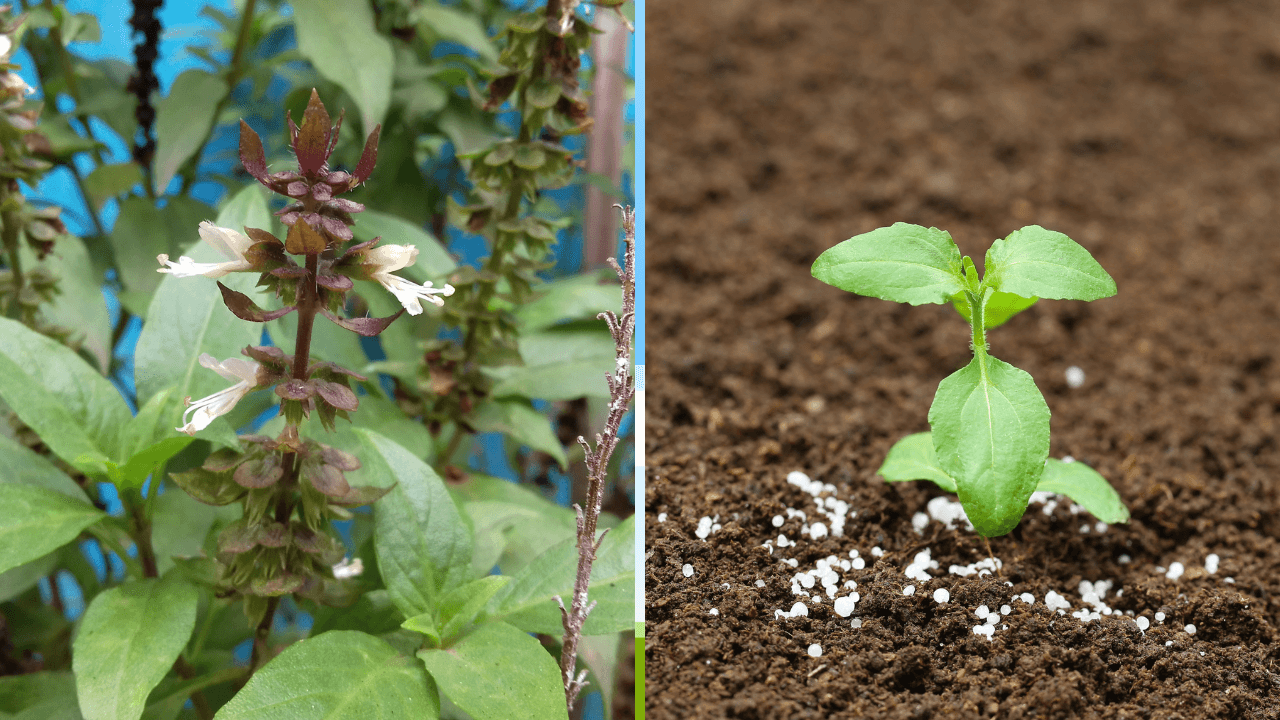




Member discussion